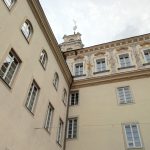Views: 460
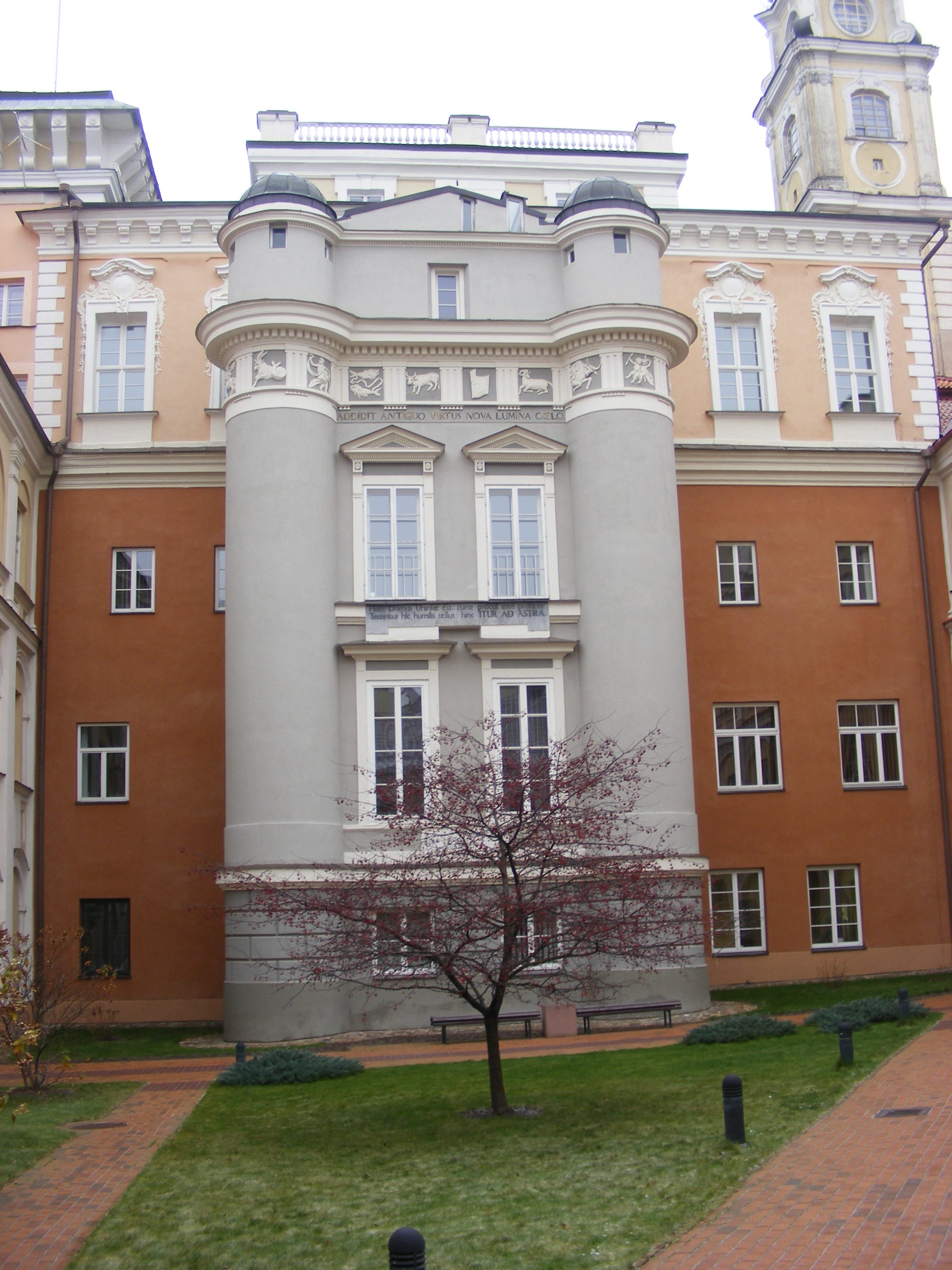 One of the Latin inscriptions: “This house is that of Urania: be gone profane worries! Here the humble Earth is scorned: from here one rises to the stars”
One of the Latin inscriptions: “This house is that of Urania: be gone profane worries! Here the humble Earth is scorned: from here one rises to the stars”
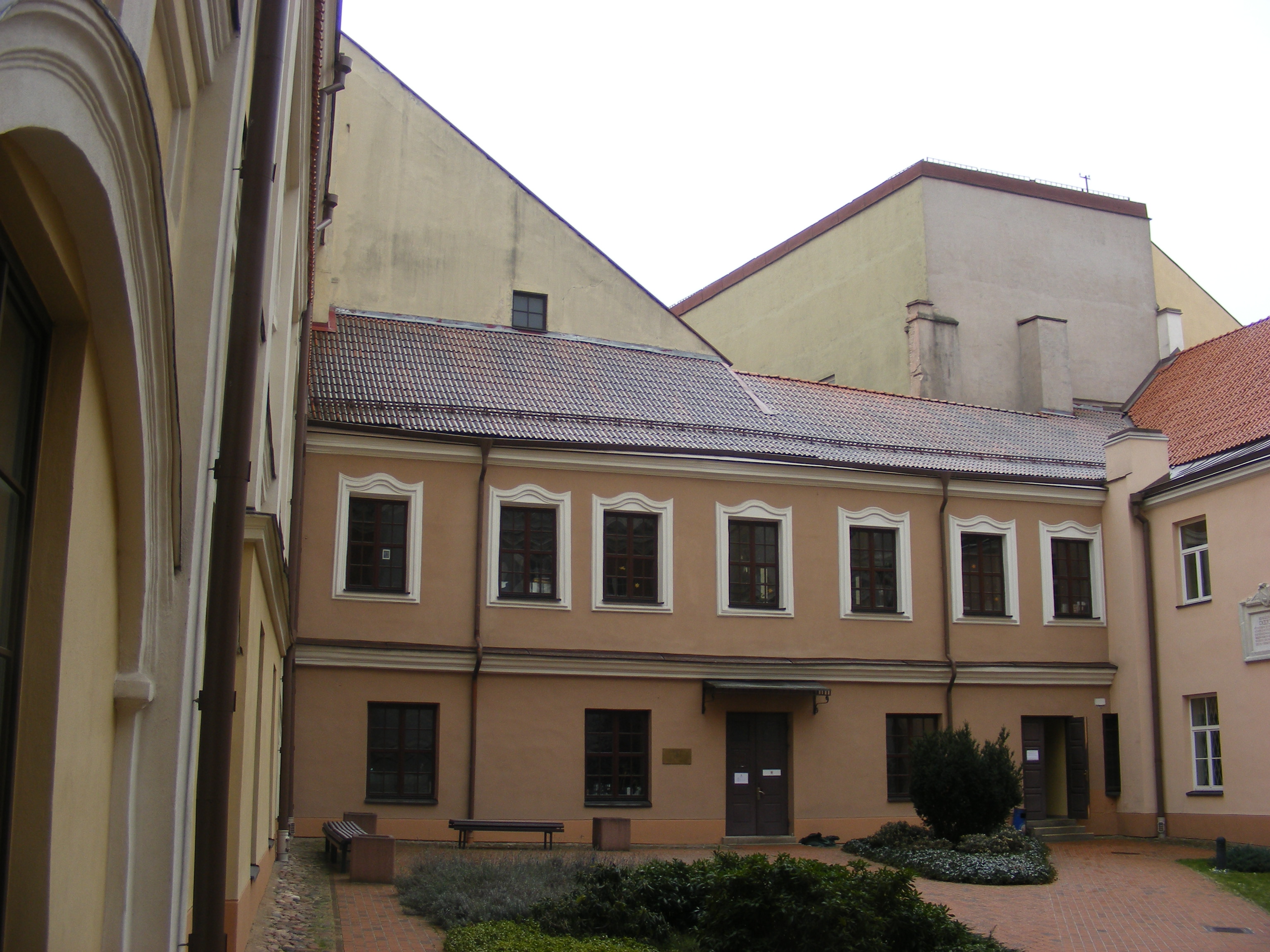 Here it was a Jesuit pharmacy. Medical herbs were grown in the courtyard
Here it was a Jesuit pharmacy. Medical herbs were grown in the courtyard
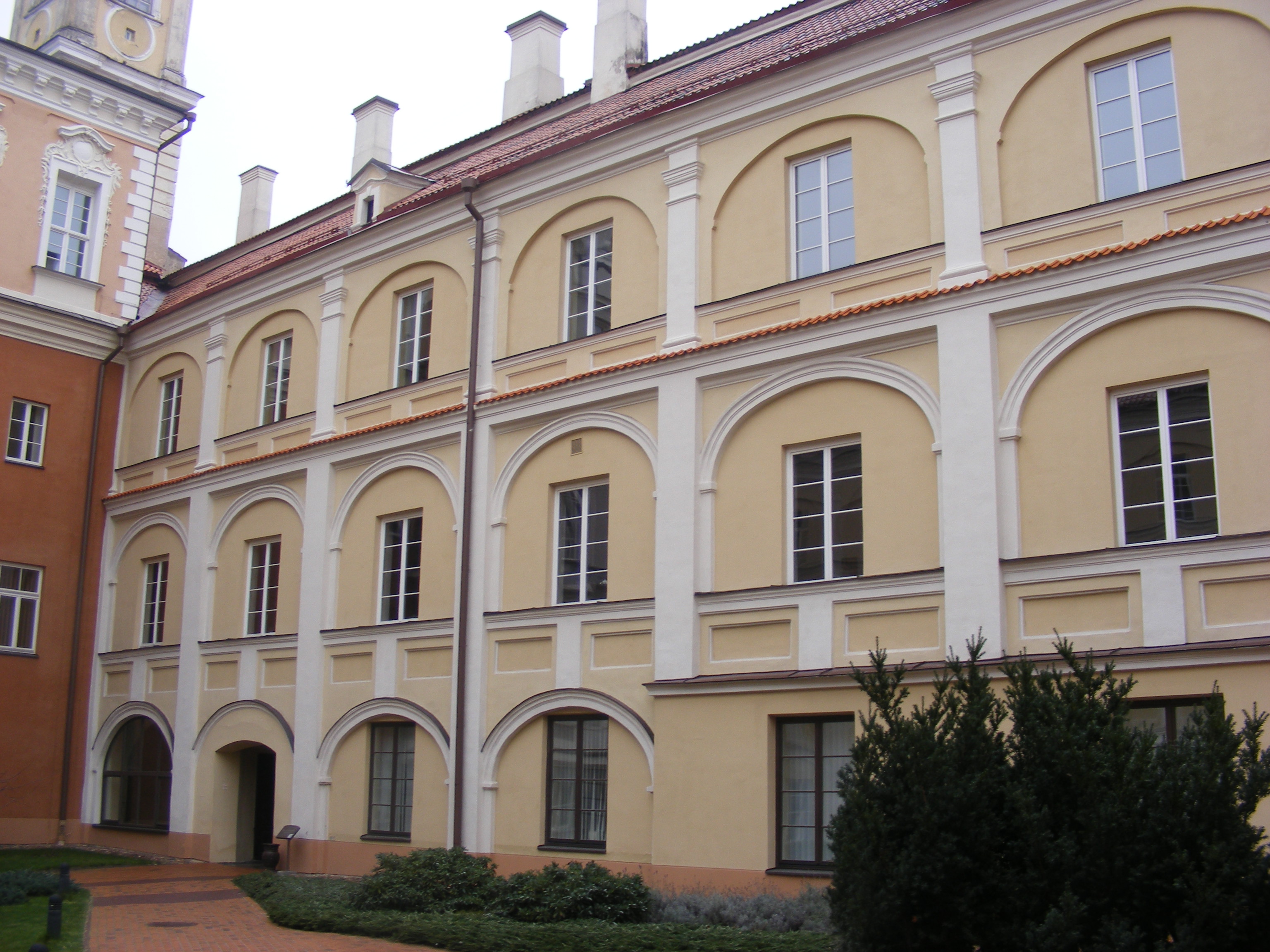 The buildings of the Observatory Courtyard are the oldest in the university ensemble
The buildings of the Observatory Courtyard are the oldest in the university ensemble
All photos are copyrighted by Vladislav B. Sotirovic
© Vladislav B. Sotirovic 2018
RELATED POSTS
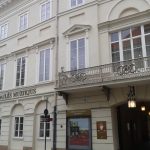
The courtyard of the palace. In 1834 the building was reconstructed and acquired its present appearance. In 1919 it was given to the university and was home to several well-known professors The façade is harmonious, moderately decorated. The façades of the servants' house facing the courtyard and Bokšto Str. (No. 5) Today the palace houses the Vilnius Picture Gallery and the Lithuanian Art MuseumAll photos are copyrighted by Vladislav B. Sotirovic© Vladislav B. Sotirovic 2019
Continue Reading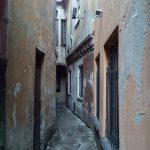
The entrance to the Knight Street in Vilnius Old TownA courtyard after the end of the Knight StreetThe end of the Knight Street (followed by the courtyard)All photos are copyrighted by Vladislav B. Sotirovic© Vladislav B. Sotirovic 2021
Continue Reading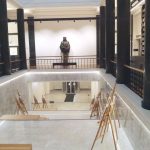
One of the meeting rooms in the library for public lectures, book presentations and discussionsOne of the exibition hallsOne of the Reading RoomsAll photos are copyrighted by Vladislav B. Sotirovic© Vladislav B. Sotirovic 2020
Continue Reading
The museum is located in the north wing of the Old Arsenal and looks at Neolithic, Bronze and Iron Age Lithuania followed by the various tribes that inhabited the area until they combined to form a state in the 13th centuryThe museum displays object found in burial sites, such as pins, amulets, rings, brooches, knives or necklaces. You can as well as see regional dressses of Lithuanian tribes before the formation of the state in the mid-13th century The museum shows a hoard of some 16.000 17th-century coins found in 1999 in Vilnius. It is believed that the hoard may have been hidden during the 1700-1721 Great Northen War. Nevertheless, it is the largest collection of old coins to be found in Lithuania All photos are copyrighted by Vladislav B. Sotirovic© Vladislav B. Sotirovic 2020
Continue Reading
The organ, made by famous German master Adam G. Casparini in 1776, is one of the most valuable cultural monuments of Lithuania. The organ itself is the only surviving original 18th-century instrument in LithuaniaThe church has many Baroque frescoes. In the cupola, there is a multi-figural composition "Apotheosis of the Holy Spirit" (neo-Baroque, 19th century)The altars and the pulpit are lavishly decorated with round and relief sculptures and ornamentation All photos are copyrighted by Vladislav B. Sotirovic© Vladislav B. Sotirovic 2018
Continue Reading
One of Baroque gates of the Sapieha ParkAmong the surviving details of the palace are Baroque façades with stucco relief works by Pietro Perti and three Baroque gates. The park is the only one in Vilnius Vilnius with features of a regular Baroque park The palace and the gates were decorated with sculptures and frescoes created by masters who had worked in the Church of St. Peter and St. Paul and St. Casimir's Chapel of the Cathedral Basilica in VilniusAll photos are copyrighted by Vladislav B. Sotirovic© Vladislav B. Sotirovic 2019
Continue Reading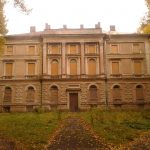
The historical building in Tyzenhauzų Str. in VilniusTyzenhauzų Str. building in VilniusTyzenhauzų Str. building in VilniusAll photos are copyrighted by Vladislav B. Sotirovic© Vladislav B. Sotirovic 2021
Continue Reading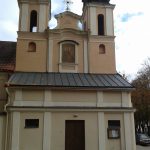
According to legend, the monastery and wooden church were built circa 1332 in the burial spot of the Franciscan monks that had been martyred by Lithuanian pagansThe building complex is formed in the mid-18th century. Today, the church possess six Late Baroque-style altars, with the main altar having a picture of the Holy Virgin Mary that is considered to be miraculous. A copy of the picture is painted on the façade in 1742 The monument to famous Lithuanian neo-Classicist architect Laurinas Gucevičius, the founder of Vilnius neo-Classicism, is erected in 1994 in the square in front of the church. All photos are copyrighted by Vladislav B. Sotirovic© Vladislav B. Sotirovic 2020
Continue Reading
The Augustines established themselves on this site in Vilnius Old Town after 1661. The monastery date from the late 18th centuryIn 1833-1842 the monastery housed the Vilnius Spiritual Academy. In 1859 it was converted into a Russian Orthodox Church of St. AndrewIn 1918 the church was returned to the Roman Catholics and renovated. After WWII the interior was destroyed during the installation of a ferroconcrete ceiling; the church was used as a warehouse in the Soviet timeAll photos are copyrighted by Vladislav B. Sotirovic© Vladislav B. Sotirovic 2019
Continue Reading
In 1986 the east winf of the Old Arsenal was restored. It houses the Museum of Applied Art and Design. The Old Arsenal enables the visitors to feel the ambience of the Renaissance Vilnius The building of the Old Arsenal was remodelled by Sigismund Augustus (second half of the 16th century) in the Renaissance style, mainly by adding a third floor (the attic), decorated in double arch niches. In was an enormous building, reputed to be the largest in the Polish-Lithuanian Commonwealth The Old Arsenal was badly damaged during the war with Russia in 1655-1661, and remained a virtual ruin until the late 18th century when in 1780 was rebuilt and burned down at the end of WWIIAll photos are copyrighted by Vladislav B. Sotirovic© Vladislav B. Sotirovic 2020
Continue Reading
Šiltadaržio St. is ending at Bernardinų St.Art Printing House Culture Center with the Theater in the streetIn the streeet, there is a Toy Museum and other cultural atractionsAll photos are copyrighted by Vladislav B. Sotirovic© Vladislav B. Sotirovic 2020
Continue Reading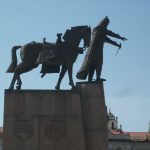
Grand Duke Gediminas is considered as the founder of the city of Vilnius. The monument is located in front of the Royal Palace and Cathedral Basilica in the very downtown of VilniusGediminas was a diplomatic politician, creating ties with the Roman Pope and other European rulers. He created favourable conditions for merchants and guildsmen to come to the city. Gediminas was a Grand Duke of the Grand Duchy of Lithuania from 1316 to 1341During the time of Gediminas, people of different ethnicities and confessions began to live in Vilnius. He is the founder of the Gediminian-Jagelonian ruling dynasty of Lithuania and later of Poland as well (till 1572)All photos are copyrighted by Vladislav B. Sotirovic© Vladislav B. Sotirovic 2018
Continue Reading
The main altar with Late Baroque forms, made from dark woodInterior of Church of St. Francis and St. BernardineWhile restoring the church, one of the largest mural paintings from the Late Gothic and Renaissance periods was discovered. They depict scenes from the Bible, Franciscan legends and symbolic imagesAll photos are copyrighted by Vladislav B. Sotirovic© Vladislav B. Sotirovic 2020
Continue Reading
Wonderful panoramic view can be seen from the roof (platform) of Gediminas Tower (Upper Castle Tower)Despite wars and destructions, the architectural ensemble of Vilnius Old Town remains unique. Baroque domes and towers of Vilnius Old Town coexist with an irregular medieval city plan Vilnius Old Town is lacking German or Scandinavian features, rather reminiscent of Prague or Rome, Vilnius differs greatly from the other Baltic capitalsAll photos are copyrighted by Vladislav B. Sotirovic© Vladislav B. Sotirovic 2019
Continue Reading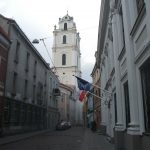
In this street, it was used to be a market place where it meets Pilies street. The first Town Hall is also believed to have stood on this spot Pharmacy house in St. John St. No. 5. Georg Schulz's pharmacy operated in this house since 1639. During the war in 1655, the house was burned down. In 1781, pharmacist Koszyk acquired the ruined building and reconstructed it The Pac estate. Since 1628, the building belonged to the Pac magnate family of the Grand Duchy of Lithuania. In 1783, the dilapidated building was bought, renovated and decorated by the Chancellor of the Grand Duchy of Lithuania - Alexander Michael Sapieha. Currently, the building belongs to the Polish Embassy All photos are copyrighted by Vladislav B. Sotirovic© Vladislav B. Sotirovic 2020
Continue Reading
The Church of the Assumption is one of the Vilnius' most beautiful Baroque churches and most mature building of the Vilnius' Baroque schoolConstruction on the church began in 1695 and the final work was carried out by Vilnius' Baroque architect Johann Christoph Glaubitz (1700-1767) in 1750-1756The front façade is adorned by a domical rotunda vestibule, and two elegant towers with clocks All photos are copyrighted by Vladislav B. Sotirovic© Vladislav B. Sotirovic 2019
Continue Reading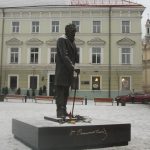
A monument to dr. Jonas Basanavičius in Vilnius in front of the building of the Lithuanian National PhilharmonicDr. Jonas Basanavičius chaired the session of Lithuanian Council that adopted the Act of Independence of Lithuania on 1918-02-16. He was the first to sign the Act of the Proclamation of the Lithuanian IndependenceBalancing between Lithuanian and Polish interests, he refused to participate in the opening of the Polish Stefan Batory University (today Vilnius University)All photos are copyrighted by Vladislav B. Sotirovic© Vladislav B. Sotirovic 2020
Continue Reading
At the egde of Vingio Park, stands a Classical chapel built by Governor Nikolai Repnin for his wife in 1799-1800Behind the chapel, one can find the restored graves of the German, Russian, Polish, Turkish and Austro-Hungarian soldiers killed in both world wars A monument to the soldiers of the Central Powers killed in WWI in Vingio ParkAll photos are copyrighted by Vladislav B. Sotirovic© Vladislav B. Sotirovic 2020
Continue Reading
Mindaugas Bridge is constructed in 2003. It has the name of the only Lithuanian King crowned on July 6th, 1253On the foothill on the left riverside of Neris, there is a Renaissance building of Old Arsenal followed by the buildings of House of the Castle Keeper and New Arsenal On the right riverside of Neris, a new business center of Vilnius is growing during the last two decadesAll photos are copyrighted by Vladislav B. Sotirovic© Vladislav B. Sotirovic 2019
Continue ReadingChodkiewicz Palace – Vilnius Picture Gallery & Lithuanian Art Museum
The Knight Street in Vilnius
Martynas Mažvydas National Library of Lithuania (Inside)
The Museum of Archaeology of Lithuania
Dominican Church of the Holy Spirit (Interior)
Sapieha Estate and Park
Tyzenhauzų Str. building in Vilnius
Church of the Holy Cross & former Hospitaller Monastery
Church of Blessed Mary the Comforter and the Augustine Monastery
The Old Arsenal in Vilnius
Šiltadaržio St. in Vilnius
Monument to Lithuanian Grand Duke Gediminas
Church of St. Francis and St. Bernardine (Interior)
Vilnius Old Town Panoramic View
St. John Steet in Vilnius
Church of the Assumption
Jonas Basanavičius Monument in Vilnius
Vingio Park in Vilnius
Photo Slider Old Town in Vilnius: Vilnius University and Monastery Quarter
Vilnius Panorama of the Neris River




